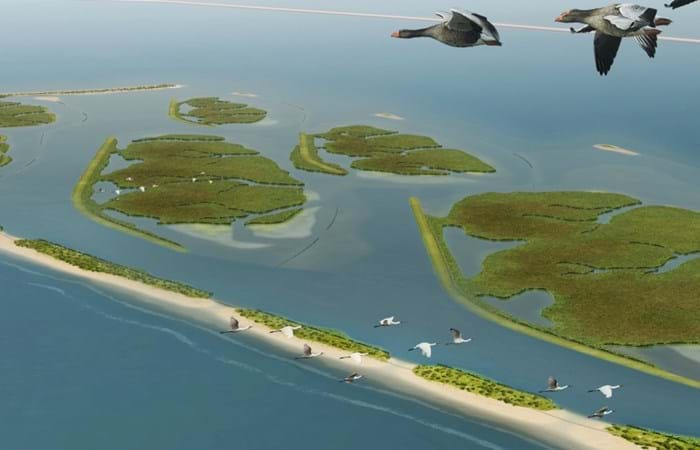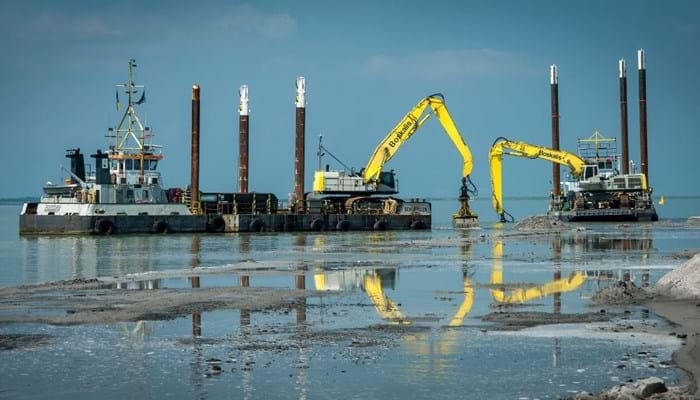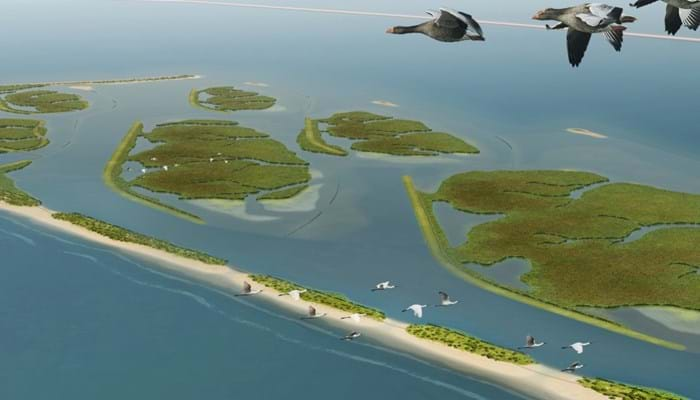In March 2016, Boskalis started work on the first stage of one of the largest nature restoration projects in western Europe - Marker Wadden. The project will transform the ecologically impoverished Markermeer lake into a dynamic area rich in animal and plant life, through the creation of nature islands using sand, clay and fine sediment. Building with Nature techniques play a key role in the project.
Challenge
The challenge is to rebalance the ecology of the Markermeer and to develop a sustainable future for the lake by developing a high-quality nature area.
The lake was created in 1976 when the Houtrib dike between Enkhuizen and Lelystad was completed. The dike had a major impact on the underwater environment of the lake. Fine sediment that was previously carried away by the current to Lake IJsselmeer fell to the bottom of Lake Markermeer where it settled like a blanket, making the water of the lake turbid. As a result fish and bird populations declined dramatically over the last decades.
Solution
One innovation being introduced into the project is building with fine sediment, under the innovative Building with Nature research program initiated by Boskalis (see link below). Fine sediment is too soft to build an island. This will be resolved by building ring dikes of sand to contain the sediment.
The Marker Wadden project is a Building with Nature project par excellence. The landscape and the ecology have been given top priority from the very start. Together with the client, the Dutch Society for the Preservation of Nature (Natuurmonumenten) we developed a project approach, that was based on the question of what provisions were needed to create a healthy habitat for plants and wildlife. Once that had been established it was then up to us, in our role of hydraulic engineer, to realize the plans. The interaction between the various parties to coordinate the wishes and practical possibilities culminated in this groundbreaking design. Hendrik Postma, Director, Boskalis Nederland
Stage 1 of this project involves the creation of the first large island, and a marshland with vegetation, shallow ponds, creeks and channels. Boskalis will construct a new area of around 300 hectares, both above and below the waterline. To protect it from storms we will construct beaches, sand banks and low dunes, linked by a rock dam. We will provide for gradual transitions from land to water, as well as creating various levels under water. This will allow the sediment to settle in shallow areas and creeks, thus creating a natural water purification system. In addition, a special trench will be constructed to collect the fine sediment from Lake Markermeer. This ‘sediment trap’ will make the turbid water clear again. The captured sediment will be used to construct more islands in the future.


